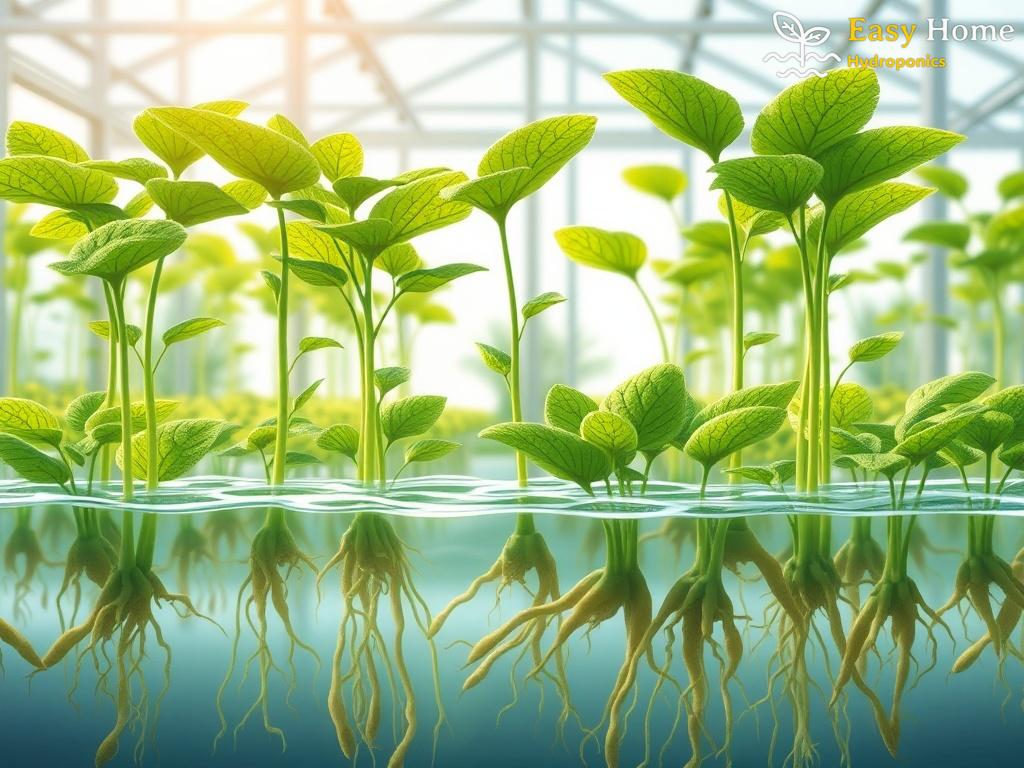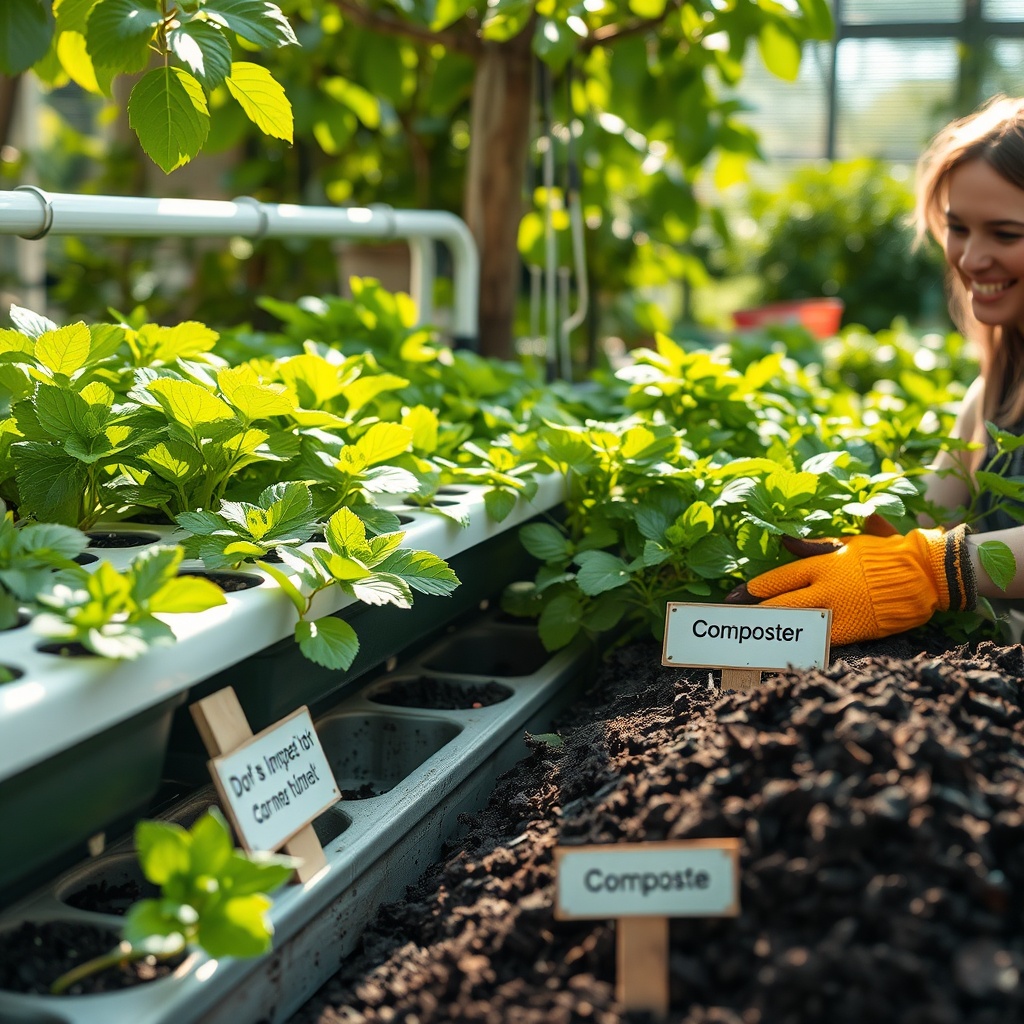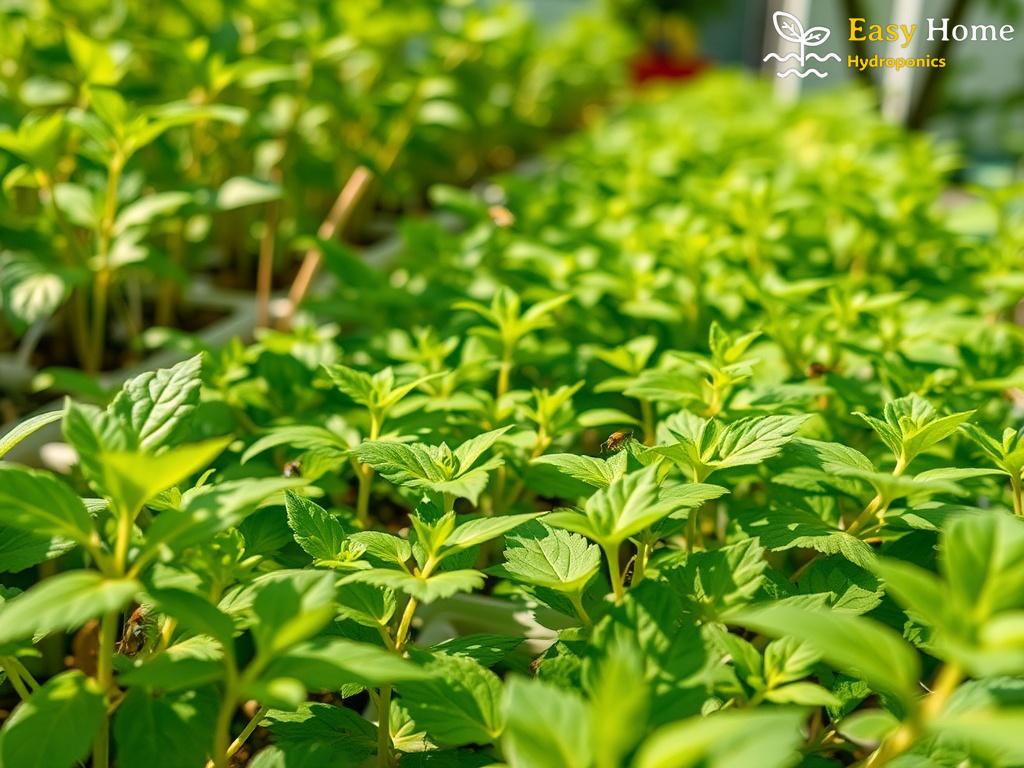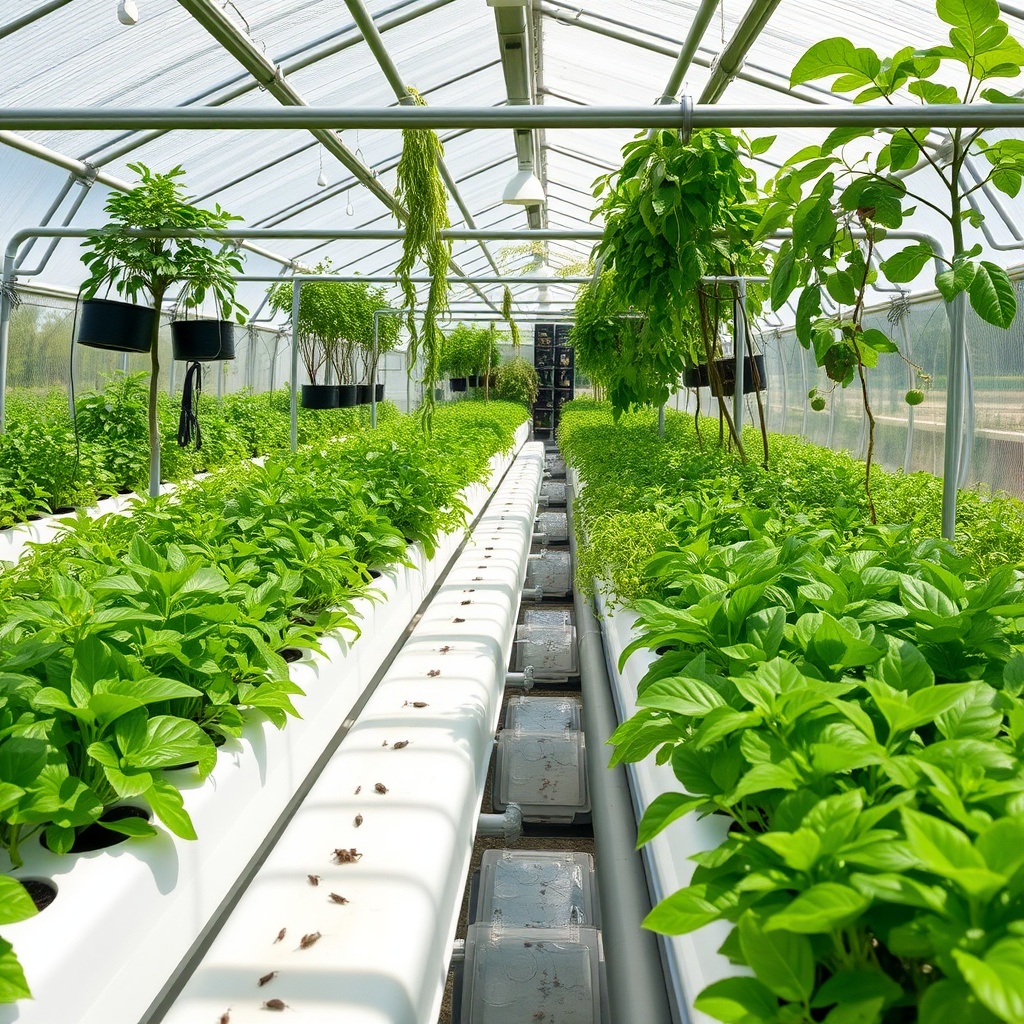Unlocking Nutrient Potential: Mycorrhizae in Hydroponics
In the ever-evolving world of agriculture, hydroponics stands out as a beacon of innovation, offering soil-less cultivation that maximizes space and resource efficiency. However, even in this controlled environment, plants can sometimes struggle to access all the nutrients they need. This is where mycorrhizal fungi come into play, acting as a crucial ally in unlocking nutrient potential and enhancing plant growth.
Mycorrhizae are symbiotic fungi that form relationships with plant roots, extending their reach and enabling plants to absorb a broader spectrum of nutrients. This partnership not only benefits the plants but also enhances the overall health of the hydroponic system. Understanding the role of mycorrhizal fungi in hydroponics can lead to increased yields and healthier crops.
The relationship between mycorrhizal fungi and plants is nothing short of miraculous. These fungi attach to the roots, forming a vast network that significantly increases the surface area for nutrient absorption. But what exactly does this mean for hydroponic systems?
- Enhanced Nutrient Uptake: Mycorrhizae help plants absorb essential nutrients like phosphorus and nitrogen that are crucial for growth.
- Water Efficiency: The fungal network improves water uptake, which can be a game-changer in hydroponic setups where water management is key.
- Soil Health Mimicry: Even in a soil-less environment, mycorrhizal fungi contribute to a balanced ecosystem, promoting beneficial microbial activity.
These benefits underscore the importance of incorporating mycorrhizal fungi into hydroponic systems, making them not just beneficial, but essential for maximizing plant health and yield.
As hydroponic enthusiasts and commercial growers seek ways to enhance their systems, integrating mycorrhizal fungi into their setups becomes a topic of great interest. The process is relatively straightforward, but understanding the right types of fungi and application methods is crucial.
| Mycorrhizal Type | Best For | Application Method |
|---|---|---|
| Arbuscular Mycorrhizal Fungi (AMF) | Most vegetable crops | Mix with growing medium |
| Ectomycorrhizal Fungi | Some fruit trees | Soil drench or root dip |
By carefully selecting the appropriate mycorrhizal fungi and applying them correctly, hydroponic growers can unlock a new level of nutrient potential in their crops. This strategic integration not only fosters healthier plants but also contributes to sustainable and efficient farming practices.
The Symbiotic Secret: Enhancing Plant Growth with Fungi
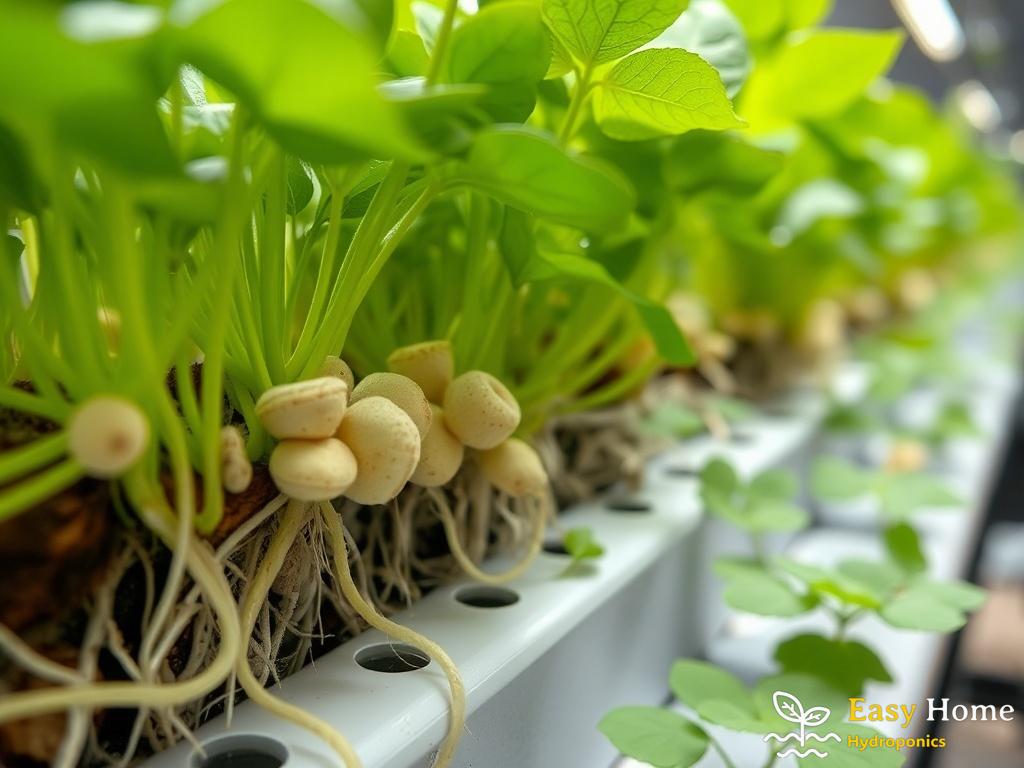
Unveiling the Power of Partnership
The relationship between mycorrhizal fungi and plants goes beyond mere coexistence; it is a profound partnership that reshapes the landscape of hydroponic agriculture. While plants traditionally rely solely on their roots to gather nutrients, the introduction of mycorrhizal fungi revolutionizes this process. These fungi, with their intricate web-like structure, extend into the growing medium, effectively increasing the surface area for nutrient absorption. This means that plants can access essential nutrients more efficiently, a benefit that is particularly significant in the nutrient-restricted environments of hydroponics.
Fungal Benefits: Beyond Nutrient Acquisition
Integrating mycorrhizal fungi into hydroponic systems does more than just enhance nutrient uptake. This dynamic duo also plays a pivotal role in fostering a healthier growth environment. For example, the symbiotic relationship improves the plant’s resilience against pathogens and environmental stressors. With a robust fungal network supporting them, plants exhibit improved overall vitality, making them less susceptible to diseases. Furthermore, mycorrhizae contribute to enhanced water retention capabilities. In hydroponic setups, where water management is crucial, *this fungi-assisted water efficiency can lead to significant savings and improved crop performance*.
Choosing the Right Fungi: A Strategic Approach
Not all mycorrhizal fungi are created equal, and understanding which types to incorporate into hydroponic systems is essential for optimal results. Factors such as crop type and nutrient needs should dictate the selection process. For instance, Arbuscular Mycorrhizal Fungi (AMF) are ideal for most vegetable crops, promoting vigorous growth and yield. In contrast, Ectomycorrhizal Fungi may be more suitable for certain fruit trees, offering tailored benefits depending on the plant species. By implementing a targeted approach to mycorrhizal integration, growers can maximize the advantages of these fungi, ultimately leading to healthier plants and increased crop yields.
Mycorrhizal Benefits: Boosting Resistance in Hydroponic Crops
Fortifying Plant Defenses Against Adversity
In the realm of hydroponics, where the absence of soil can sometimes lead to vulnerabilities, the integration of mycorrhizal fungi emerges as a powerful strategy for enhancing plant resilience. These remarkable organisms not only assist in nutrient absorption but also play a pivotal role in bolstering crops against a variety of stressors. The synergy between mycorrhizal fungi and plants fosters a dynamic defense mechanism that can be the key to thriving in challenging conditions.
Enhancing Disease Resistance Through Fungal Partnerships
One of the most compelling aspects of mycorrhizal fungi is their ability to enhance a plant’s natural defenses. When these fungi colonize plant roots, they establish a vast underground network that can communicate distress signals among neighboring plants. This phenomenon, often referred to as “priming,” prepares plants to respond more effectively to pathogen attacks. Studies have shown that crops with mycorrhizal associations exhibit reduced infection rates from root rot and foliar pathogens. This enhanced resistance not only protects individual plants but also contributes to the overall health of the hydroponic ecosystem.
Stress Tolerance: A Fungal Advantage
In addition to combating diseases, mycorrhizal fungi empower plants to withstand environmental stresses such as drought and salinity. These fungi enhance root architecture, enabling deeper and more efficient water uptake. As a result, hydroponic crops can better cope with fluctuations in nutrient availability and moisture levels, which are crucial in a controlled environment. Furthermore, the presence of mycorrhizae has been linked to improved photosynthetic efficiency, allowing plants to maintain vigor during adverse conditions. By fostering resilience through these mechanisms, mycorrhizal fungi not only safeguard crop yield but also promote sustainability in hydroponic practices.
Fungi to the Rescue: Optimizing Water Efficiency in Hydroponics
Harnessing Nature’s Water Wizards
In the intricate dance of hydroponic cultivation, where every drop of water counts, mycorrhizal fungi emerge as unsung heroes. These remarkable organisms not only enhance nutrient uptake but also play a pivotal role in optimizing water efficiency. As growers seek sustainable solutions to manage water resources in controlled environments, the role of mycorrhizal fungi becomes increasingly vital. By forming symbiotic relationships with plant roots, these fungi extend their networks into the growing medium, crafting a pathway that significantly improves water absorption.
The Science Behind Water Efficiency
Understanding how mycorrhizal fungi operate reveals the underlying mechanisms that contribute to water efficiency. When these fungi colonize roots, they create an extensive mycelial network that acts like a sponge, retaining moisture and facilitating water transport directly to the plant’s root system. This is particularly advantageous in hydroponics, where water availability can fluctuate. Research indicates that plants partnered with mycorrhizae can access water more effectively, leading to enhanced growth and reduced stress. Moreover, the fungi help to create a microenvironment around the roots that minimizes water loss through evaporation, further enhancing efficiency.
Maximizing Crop Resilience through Water Management
In the quest for sustainable agriculture, the integration of mycorrhizal fungi can revolutionize traditional approaches to water management. By improving water retention and uptake, these fungi not only enable plants to thrive in challenging conditions but also contribute to overall crop resilience. In hydroponic systems, where water stress can lead to significant yield losses, mycorrhizal partnerships provide a critical buffer. This resilience is especially crucial during periods of nutrient fluctuations, as the fungi help maintain plant vitality, ensuring that crops not only survive but flourish. Thus, the incorporation of mycorrhizal fungi in hydroponic practices is not just beneficial; it is essential for achieving optimal water efficiency and promoting sustainable crop production.
Tailoring Mycorrhizal Inoculants for Hydroponic Success
In the compelling landscape of hydroponics, the integration of mycorrhizal fungi presents a transformative opportunity for growers aiming to elevate their crop yields and resilience. However, not all mycorrhizal inoculants are created equal, and tailoring these microbial partnerships is crucial for unlocking their full potential in hydroponic systems. Understanding how to customize these inoculants can significantly enhance the efficiency of nutrient uptake, water retention, and overall plant health.
Choosing the Right Inoculant for Specific Crops is the first step in this journey. Different crops have unique nutritional needs and growth patterns, which necessitates a strategic approach to mycorrhizal integration. For instance, while Arbuscular Mycorrhizal Fungi (AMF) are particularly effective for leafy greens and herbs, other crops like tomatoes may benefit from a blend of AMF and Ectomycorrhizal Fungi. Conducting thorough research into the specific requirements of each crop can guide growers in selecting the most appropriate mycorrhizal species, ensuring that the partnership flourishes.
Optimizing Application Techniques is equally important in this tailored approach. The method of inoculation can significantly impact the success of mycorrhizal colonization. For example, incorporating the inoculant directly into the growing medium allows for immediate contact with the plant roots, promoting rapid colonization. Alternatively, a soil drench technique can be employed for crops that may be sensitive to root disturbance. Furthermore, considering the timing of application—whether at planting or during the vegetative stage—can also enhance the effectiveness of mycorrhizal fungi. By adjusting these factors, growers can create an environment where mycorrhizal fungi can thrive alongside their crops, maximizing the benefits of this symbiotic relationship.
Monitoring and Adjusting Conditions within hydroponic systems can further optimize the effectiveness of mycorrhizal fungi. Environmental factors such as pH, nutrient availability, and moisture levels play a crucial role in the health of both plants and fungi. Regularly testing and adjusting these parameters ensures that the mycorrhizal network remains robust and effective. For instance, maintaining an optimal pH can enhance nutrient solubility, making it easier for fungi to absorb and transfer these essential elements to plants. Additionally, implementing a balanced nutrient regimen can prevent competition between plants and fungi, allowing both to coexist harmoniously.
| Mycorrhizal Type | Recommended Crop | Application Method | Optimal Conditions |
|---|---|---|---|
| Arbuscular Mycorrhizal Fungi (AMF) | Leafy Greens, Herbs | Mix with Growing Medium | pH 5.5-6.5, Moderate Nutrient Levels |
| Ectomycorrhizal Fungi | Fruit Trees, Certain Vegetables | Soil Drench | pH 6.0-7.0, High Organic Matter |
By tailoring mycorrhizal inoculants through careful selection, application, and environmental adjustments, hydroponic growers can harness the full potential of these remarkable fungi. This strategic approach not only leads to enhanced plant growth and resilience but also paves the way for sustainable agricultural practices that are vital in today’s ever-changing climate.

